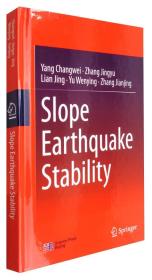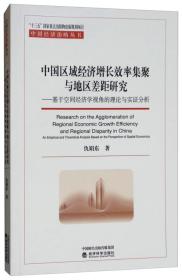
边坡地震稳定性(英文版)
¥ 60.66 6.1折 ¥ 100 九品
仅1件
北京海淀
认证卖家担保交易快速发货售后保障
作者Yang Changwei,Zhang Jingyu,Lian Jing 编
出版社科学出版社
出版时间2017-01
版次1
装帧精装
货号A24
上书时间2024-11-13
- 在售商品 暂无
- 平均发货时间 15小时
- 好评率 暂无
- 最新上架
商品详情
- 品相描述:九品
图书标准信息
- 作者 Yang Changwei,Zhang Jingyu,Lian Jing 编
- 出版社 科学出版社
- 出版时间 2017-01
- 版次 1
- ISBN 9787030495419
- 定价 100.00元
- 装帧 精装
- 开本 16开
- 纸张 胶版纸
- 页数 218页
- 正文语种 英语
- 【内容简介】
- This book begins with the dynamic characteristics of the covering layer-bedrock type slope, containing monitoring data of the seismic array, shaking table tests, numerical analysis and theoretical derivation. Then it focuses on the landslide mechanism and assessment method. It also proposes a model that assessing the hazard area based on the field investigations. Many questions, exercises and solutions are given. Researchers and engineers in the field of Geotechnical Engineering and Anti-seismic Engineering can benefit from it.
- 【目录】
-
1 Introduction
1.1 Background and Significance
1.2 Review
1.2.1 Shaking Table Test Technology
1.2.2 Dynamic Characteristics of Slope
1.2.3 Deformation Characteristics and Instability Mechanism
1.2.4 Seismic Stability Evaluation Method
1.2.5 Prediction Model for Earthquake-Induced Landslide Hazard
1.3 Problems
1.4 Research Objectives and Content
2 Seismic Array Monitoring Results Analysis
2.1 General Condition
2.2 Monitoring Data of Seismic Array in 5.1 2 Wenchuan Earthquake
2.3 Response Characteristics Analysis
2.4 Frequency Spectrum Response Characteristics
2.4.1 Fourier Spectrum Along Elevation
2.4.2 Seismic Ground Motion Response Spectrum Along Elevation
2.5 Brief Summary
3 Shaking Table Test of Rock Slopes
3.1 Large-Scale Shaking Table Test Design
3.1.1 Purpose
3.1.2 Installation
3.1.3 Similarity System
3.1.4 Similar Materials
3.1.5 Test Instruments and Monitoring Points Disposition Principle
3.1.6 Testing Points Disposition
3.1.7 Design and Manufacture
3.1.8 Sensors
3.1.9 Loading Scheme
3.1.1 0 Data Collecting System
3.1.1 1 Result Record
3.2 Result Analysis
3.2.1 Influence Factors of Acceleration Amplification Effect
3.2.2 Fourier Spectrum and Response Spectrum of Acceleration
3.3 Brief Summary
4 Numerical Analysis Research
4.1 Brief Introduction to GDEM
4.1.1 Advantages of GDEM Software
4.1.2 Fundamental Principle of GDEM
4.1.3 Verification
4.1.4 Fundamental Function
4.1.5 Modeling Progress and Methods
4.2 Key Problems in Numerical Analysis
4.2.1 Numerical Analysis Model
4.2.2 Material Parameters and Constitutive Model
4.2.3 Boundary Conditions
4.2.4 Seismic Ground Motion Input Conditions
4.3 Verification of Numerical Analysis Results
4.4 Seismic Dynamic Response Features
4.4.1 Acceleration Amplification Effects
4.4.2 Acceleration Fourier Spectrum
4.4.3 Acceleration Amplification Effects
4.5 Local Topography Effect
4.5.1 Key Problems in Numerical Analysis
4.5.2 Calculation Results Analysis
4.6 Brief Summary
5 Theoretical Solutions of Acceleration Amplification of Hill
5.1 Formula Derivation
5.1.1 General Thinking and Basic Assumption
5.1.2 Generalized Analysis Model
5.1.3 Derivation Process
5.1.4 Time-Frequency Analysis Process
5.1.5 Practical Application
5.2 Solving Approach
5.3 Verification
5.3.1 Overview
5.3.2 Verification
5.4 Parameter Analysis
5.4.1 Peak Value
5.4.2 Frequency
5.4.3 Bevel Angles
5.4.4 "Whiplash Effect".
5.5 Comparative Analysis
5.5.1 Brief Introduction of Some Seismic Design Code
5.5.2 Code for Seismic Design of Buildings GB50011-2010
5.5.3 Specifications for Seismic Design of Hydraulic Structures DL/5073-2000
5.5.4 Design Specification for Slope of Hydropower and Water Conservancy Project SL/386-2007
5.5.5 Comparative Analysis
5.6 Brief Summary
6 Slope Deformation Characteristics and Formation Mechanism
6.1 Brief Introduction
6.1.1 Numerical Simulation Method
6.1.2 Numerical Analysis Model
6.1.3 Numerical Constitutive Model and Material Parameters
6.1.4 Boundary Conditions
6.2 Deformation Characteristics and Disaster Mechanism
6.2.1 Whole Landslide Process
6.2.2 Landslide Hazard Phenomenon
6.2.3 Landslide Mechanism Analysis
6.3 Brief Summary
7 Slope Seismic Stability
7.1 Slope Seismic Stability
7.1.1 General Thinking and Basic Assumption
7.1.2 Generalized Analysis Model
7.1.3 Reflective and Transmission Coefficients
7.1.4 Instant Seismic Stability Coefficient
7.1.5 Time-Frequency Analysis Process of Seismic Waves..
7.1.6 Practical Application of Seismic Wave Time-Frequency Effects
7.2 Time-Frequency Analysis Formula Derivation
7.3 Verification
7.3.1 Overview
7.3.2 Gravitational Stress Field
7.3.3 Calculation Results' Comparison
7.4 Study on Parameters
7.4.1 Incident Angle on Transmitted and Reflected Coefficients of the Structural Surface
7.4.2 The Influence of Elasticity Modulus of Cover Layer on Transmitted and Reflected Coefficients of the Structural Surface
7.4.3 The Influence of Incident Angle on Transmitted and Reflected Coefficients of the Structural Surface
7.4.4 The Influence of Elasticity Modulus of Cover Layer on Transmitted and Reflected Coefficients of the Structural Surface
7.4.5 The Influence of Elasticity Modulus of Cover Layer on Total Transmitted and Reflected Energy Coefficients of the Structural Surface
7.5 Advantage
7.6 Brief Summary
8 Prediction Model
8.1 Field Investigation
8.2 Controlling Factors
8.3 Analysis of Controlling Factors
8.3.1 Correlation Between Landslide Volume V and Horizontal Sliding Distance L and Vertical Sliding Distance H
8.3.2 Correlation Between Bevel Angle tanθ and Equivalent Friction Coefficient f
8.3.3 Seismic Ground Motion Attenuation Model Based on Measured Data of Wenchuan Earthquake
8.3.4 Correlation Between PGA and Horizontal Sliding Distance
8.4 Prediction Model O
8.5 Case Analysis of Donghekou Landslide and Magongwoqian Landslide
8.6 Parameters
8.7 Brief Summary
Conclusions and Prospects
Bibliography
点击展开
点击收起
— 没有更多了 —












以下为对购买帮助不大的评价